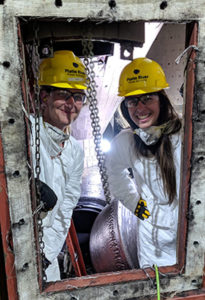In the summer of 2020, Colorado State University electrical engineering student Giuliana Seretti was supplementing her learning with an internship at the Platte River Power Authority (PRPA). Her growing interest in solar energy, both in and out of the classroom, led her to John Bleem, a research associate at the CSU Energy Institute and former PRPA employee who was working on a She’s in Power initiative.
The goal: Estimating the total amount of solar power energy being produced in Fort Collins. With more than 1,700 photovoltaic systems producing data simultaneously throughout the city, this is no small task.
Seretti had to get up to speed quickly on the years-long project and solar energy jargon. “It was a big learning curve for me at the beginning,” she allowed. But before long, she had developed her own machine-learning model that predicts solar output based on temperature, global horizontal irradiance and other parameters. She also examined all models, existing and proposed, for data accuracy — work that continues to this day.
“Basically, I’m trying to demonstrate the benefits of certain models and how they should be applied to measuring solar output in Fort Collins,” Seretti explained.
Her mentor Bleem has been impressed with the results and Seretti’s perseverance: “The She’s in Power project allows Giuliana to learn about solar energy modeling (not part of the curriculum) and provides a real-world application for machine learning. She is gaining both ‘hard’ (technical) and ‘soft’ (collaboration) experience.”




